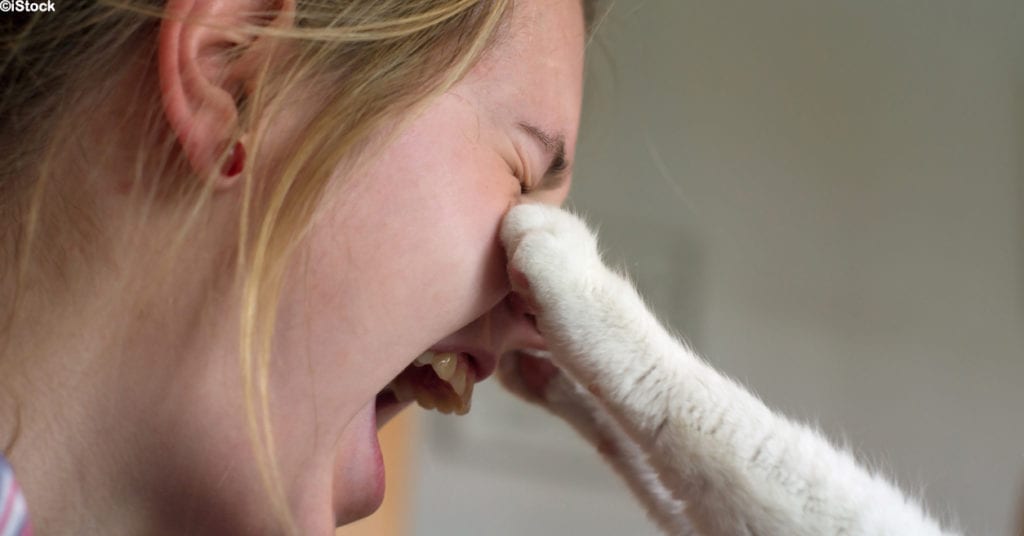It’s happened to the best of us. You see a cuddly cat that you’ve just got to pick up. It could be a friend’s, it could be yours, it doesn’t matter. You’ve got one hand underneath its furry belly when all of the sudden you’re getting clawed six ways from Sunday. It’s a painful warning, and you leave a little more scared of cats than when you started.
Luckily, Dr. Burstyn, otherwise known as the “Helpful Vancouver Vet” is here to teach us how to properly pick up a cat. His method is safe, simple, and comfortable for both the cat and yourself.
One thing you gotta know right off the bat: cats don’t mind being squished. If anything, it makes them feel more comfortable and secure. Plus, it minimizes the risk of them squirming and accidentally scratching you with one of their claws.
Second, Dr. Burstyn wants us to all cut it out with this “two hands behind the front legs and letting them dangle” nonsense. It’s not comfortable for the cat and can be downright dangerous. Like babies, cats need proper support when they’re being held. So, when lifting them up by the torso, make sure to use your hands and forearm to support their belly, and squish them up against your side for extra security.
Photo Credit: YouTube: Helpful Vancouver Vet
If you’re in a pinch and need to pick up and transport a cat quickly, Dr. Burstyn advocates for the “football carry.” All this entails is one hand on the stomach, one hand on the butt, and tucked into your side like a football. Obviously, don’t carry your cat like this on a regular basis, but in the fast-paced world of veterinarians, the football carry is an indispensable tool.
Photo Credit: YouTube: Helpful Vancouver Vet
Then there are those cats who are more comfortable riding on your shoulder than in your arms. Allowing a cat to climb up on your shoulder can be nerve-wracking, especially if you’ve never done it before. After all, Dr. Burstyn points out, cats tend to use their claws to climb. All you’ve got to do is lower yourself to their level, which lets them hop onto your shoulder with little effort and no claws. Need them to hop off? Simply lower yourself back down and they will eventually correct themselves and crawl back onto the table or floor.
Photo Credit: YouTube: Helpful Vancouver Vet
If you’d like to check out Dr. Burstyn’s full video (and two beautiful cats) you can watch it below.
